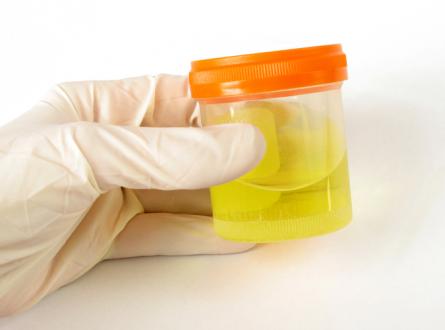Urine Test Procedure may be required to perform the tests for sugar and albumin in ante-natal clinic, OPD, and in a diabetic clinic.The purpose of Urinalysis is to know the diagnosis of urinary tract. Following are some principles and procedure of testing a urine.
- Give the patient a clean, dry container for collecting the specimen. Instruct him/her to first pass a little urine in the latrine or urinal and then collect mid portion of stream into
- Twenty four hours collection of urine
If a female patient has any vaginal discharge the collection of urine is done as follows : - Ask the patient to clean her vulva with plain water.
- Instruct her to dry or wipe himself.
- Provide a clean cloth or cotton swabs for covering the vagina to prevent any drainage into the specimen. Instruct her how to dispose this, after use.
- About 100-150 ml of urine should be collected as specimen for lab test.
- Make proper level on the specimen container.
Twenty Four Hours Collection of Urine
For certain tests and also for knowing the amount passed in 24 hours some time 24 hours collection of urine is instructed by doctor. The following procedure is to be adopted.
- Select a big covered jar or container of approximate capacity of 2 Ltrs.
- The container should be clean and labelled. 24 hours collection of urine with patient name and bed number etc.
- Intimate the patient, relative and the attending sweeper about the procedure and instruct them not to empty the container.
- Instruct patient in detail the procedure for collection. All the time the patient passes urine should be collected and poured into the big jar labelled 24 hours collection. If even at one time urine could not be collected, then the whole sample should be discarded and the procedure for fresh collection should be re-started.
- The timing can be conveniently taken as 6 AM to 6 AM of next day
- For correct measurement one 6 AM sample either first or of the next day should be taken.
- Measure the total amount of urine and send it to Lab for testing.
- The procedure should be noted in the chart of the patient.
Being A Perfect Doctor You Must Know Urine Test Procedure And Urine Test Preparation
Equipment Required
- Test tube in test tube stand. 2. Test tube holder. 3. Spirit lamp. 4. Match box to light the lamp . 5. Acetic acid (Dilute). 6. Benedict’s qualitative reagent solution. 7. Fresh urine sample.
Acetic Acid Test
- Fill test tube up to 2/3 of its length with urine.
- Hold the test tube with test tube holder at an angle to, the spirit lamp.
- Flame only at the portion or upper layer.
- Observe if any cloudy appearance occurs.
- Add few drops of acetic acid
- If the cloudiness or turbidity disappears on adding acetic acid then it is phosphate. If the cloudiness persists then it indicates presence of albumin. •
- No cloudiness—No albumin.
- Slightly cloudiness—Trace of albumin.
- Heavy cloudiness—Significant amount of Albumin.
Benedict’s Test for Presence of Sugar
- Take about 5cc of Benedict’s solution in a test tube.
- Add 8 drops of urine by means a dropper to this solution.
- Boil over a spirit lamp .
- After it has boiled, remove the tube from flame and observe the colour of the contents.
- Be careful not to let the urine boil over and spill out of the test tube.
- Sometimes during boiling of tube the hot mixture suddenly jumps out of the test tube. So be careful and always hold the test tube opening away from you or any body standing near by you.
Observation
- Green colour—Trace of sugar.
- Green turbidity—Slight amount of sugar (+) Less than 0.5%.
- Yellow turbidity—Sugar (++) 0.5 to 1 gm %.
- Orange turbidity—Moderate amount of sugar (+ ++) (1 to 2 gm %).
- Brick red—Excess amount of sugar (+ + + +) 2 gm% or above.
Points to Remember
- After testing the urine wash test tube thoroughly using soap and water. After rinsing with clean water allow the test tubes to air dry by turning upside down with test tube stand.
- A positive sugar test always mean that the patient is diabetic.
- A lactating mother may show positive sugar test.
- Also a person taking excess sugar or sweets or glucose by I.V. route may show positive sugar test without any significance.
- A person taking more salicylate or vitamins or anti T.B. drugs may show positive sugar test.
